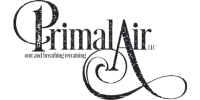
Can Orofacial Myofunctional Therapy Improve Sleep Apnea and Breathing Disorders?
Contents
What is Orofacial Myofunctional Therapy (OMT)?
The Link Between OMT and Sleep Apnea
How OMT Complements Breathing Retraining Techniques
The Science Behind OMT and Breathing Disorders
Real-Life Success Stories
How to Get Started with OMT
The Future of OMT in Sleep and Breathing Health
Sleep apnea and breathing disorders affect millions of people worldwide, often leading to poor sleep quality, daytime fatigue, and even long-term health complications. While CPAP machines and surgical interventions are commonly prescribed, many are seeking non-invasive, holistic solutions. Enter Orofacial Myofunctional Therapy (OMT)—a growing field that focuses on retraining the muscles of the face, mouth, and throat to improve breathing, swallowing, and overall oral function. But can OMT really help with sleep apnea and breathing disorders? Let’s dive into the science, benefits, and real-world applications of this innovative therapy.
What is Orofacial Myofunctional Therapy (OMT)?
Orofacial Myofunctional Therapy is a specialized form of therapy that targets the muscles of the face, mouth, and throat. It involves a series of exercises designed to correct improper muscle function, such as tongue thrusting, mouth breathing, and poor swallowing patterns. By strengthening and retraining these muscles, OMT aims to improve oral posture, enhance breathing, and support overall airway health.
The Link Between OMT and Sleep Apnea
Sleep apnea, particularly obstructive sleep apnea (OSA), occurs when the muscles in the throat relax too much during sleep, causing a temporary blockage of the airway. This leads to pauses in breathing, often accompanied by loud snoring or gasping for air. Research suggests that weak or dysfunctional orofacial muscles can contribute to this problem by failing to keep the airway open during sleep.
OMT addresses this issue by strengthening the muscles that support the airway, including the tongue, soft palate, and throat. Studies have shown that OMT can reduce the severity of sleep apnea by improving muscle tone and promoting proper tongue posture, which helps keep the airway open.
How OMT Complements Breathing Retraining Techniques
Breathing retraining methods, such as the Buteyko Technique, focus on improving breathing patterns and reducing hyperventilation. These techniques are particularly effective for conditions like asthma, chronic obstructive pulmonary disease (COPD), and even anxiety-related breathing disorders. However, they often overlook the role of orofacial muscles in maintaining optimal breathing.
This is where OMT comes in. By improving the strength and coordination of the facial and oral muscles, OMT creates a solid foundation for effective breathing retraining. For example, proper tongue posture—a key focus of OMT—ensures that the airway remains open, making it easier to practice slow, controlled breathing techniques.
The Science Behind OMT and Breathing Disorders
Several studies have demonstrated the effectiveness of OMT in improving sleep apnea and breathing disorders. A 2015 study published in Chest Journal found that OMT significantly reduced the severity of obstructive sleep apnea in adults. Participants who underwent OMT experienced fewer breathing pauses during sleep and reported improved sleep quality.
Another study published in Sleep Medicine Reviews highlighted the role of OMT in addressing pediatric sleep apnea. Children who received OMT showed improvements in nasal breathing, reduced snoring, and better overall sleep patterns.
Real-Life Success Stories
Many individuals have experienced life-changing results with OMT. Take Sarah, a 42-year-old teacher who struggled with severe sleep apnea for years. Despite using a CPAP machine, she continued to feel exhausted during the day. After starting OMT, Sarah noticed a significant improvement in her sleep quality. "I no longer wake up gasping for air," she says. "I feel more rested and energized than I have in years."
Similarly, 10-year-old Ethan suffered from chronic mouth breathing and snoring due to enlarged tonsils and weak oral muscles. After six months of OMT, his breathing improved, and his snoring disappeared. "Ethan is finally getting the rest he needs," his mother shared. "It’s made a world of difference for our entire family."
How to Get Started with OMT
If you’re interested in exploring OMT for sleep apnea or breathing disorders, here’s how to get started:
Consult a Qualified Therapist: Look for a certified orofacial myofunctional therapist who can assess your specific needs and create a personalized treatment plan.
Commit to the Exercises: OMT requires consistency and dedication. Most therapists recommend daily exercises over several months to see significant results.
Combine with Breathing Retraining: Pair OMT with techniques like the Buteyko Method for even greater benefits.
Monitor Your Progress: Keep track of your symptoms and improvements to stay motivated and adjust your treatment as needed.
The Future of OMT in Sleep and Breathing Health
As awareness of OMT grows, so does its potential to revolutionize the way we approach sleep apnea and breathing disorders. With its non-invasive nature and focus on holistic health, OMT offers a promising alternative—or complement—to traditional treatments. Whether you’re struggling with sleep apnea, chronic mouth breathing, or other breathing issues, OMT could be the key to unlocking better sleep and improved quality of life.
Orofacial Myofunctional Therapy is more than just a series of exercises—it’s a pathway to better breathing, improved sleep, and enhanced overall health. By addressing the root causes of sleep apnea and breathing disorders, OMT empowers individuals to take control of their well-being in a natural, sustainable way. If you’re ready to explore this innovative therapy, start by consulting a qualified therapist and take the first step toward a healthier, more restful life.
Ready to improve your sleep and breathing? Explore the benefits of Orofacial Myofunctional Therapy and discover how Primal Air can support your journey to better health. Visit our blog for more insights or contact us to learn more about our holistic breathing solutions.

